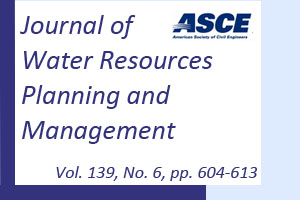
Development and field validation of a burst localisation methodology.
Author: Farley B., Mounce S. R. and Boxall J.B.
Full Paper
Abstract:
Reducing water loss through bursts is a major challenge throughout the developed and developing world. Currently burst lifetimes are often long because awareness and location of them is time- and labor-intensive. Advances that can reduce these periods will lead to improved leakage performance, customer service, and reduce resource wastage. In water-distribution systems the sensitivity of a pressure instrument to change, including burst events, is greatly influenced by its own location and that of the event within the network. A method is described here that utilizes hydraulic-model simulations to determine the sensitivity of potential pressure-instrument locations by sequentially applying leaks to all potential burst locations. The simulation results are used to populate a Jacobian matrix, quantifying the different sensitivities. This matrix may then be searched to identify different instrument locations to achieve required goals: maximising overall sensitivity to all potential events or selective sensitivity to events in different network areas. It is shown here that by searching this matrix to optimize such selective sensitivity, while minimising instrument numbers, it is possible to provide useful burst-localization information. Results are presented from field studies that demonstrate the practical application of the method, showing that current standard network models can provide sufficiently accurate quantification of differential sensitivities and that, once combined with event-detection techniques for data analysis, events can effectively be localized using a small number of instruments.

